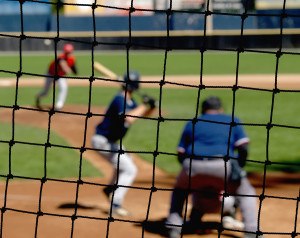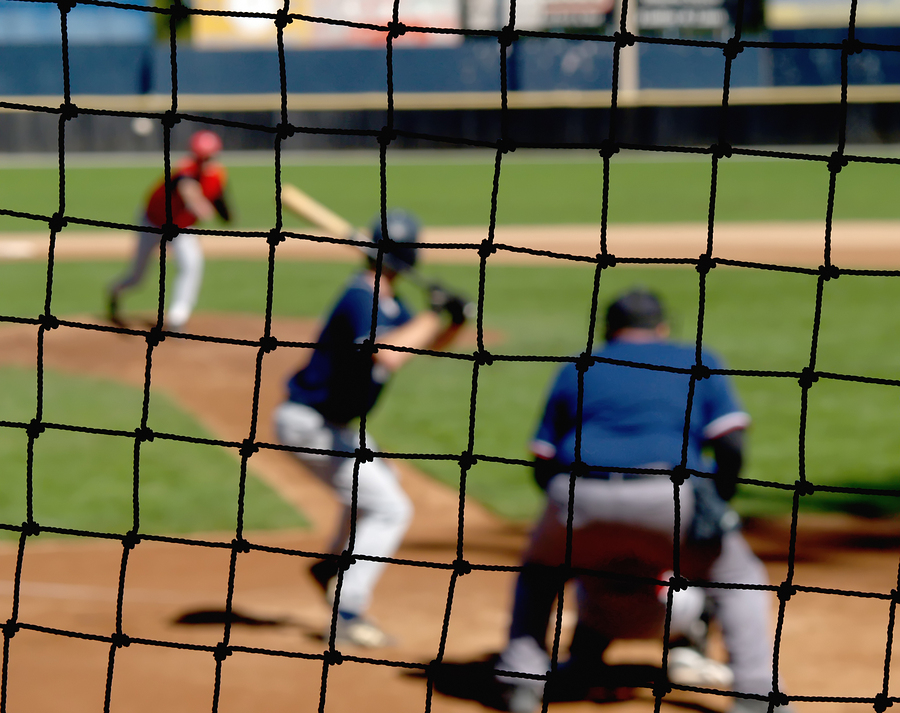Contrary to popular belief, the worst injuries baseball catchers face on the field come from errant bats and foul balls, not home-plate collisions with base runners, according to findings of a study led by researchers at the Johns Hopkins University School of Medicine.
The research, done in collaboration with Baltimore Orioles trainers Brian Ebel and Richard Bancells, involved analysis of all catcher injuries during major league baseball games over a 10-year period.
A summary of the findings, published ahead of print Aug. 28 in The American Journal of Sports Medicine, reveals that only a small fraction of injuries sustained by catchers — fewer than 15 percent — were the result of run-ins with another player. Such “contact” injuries, the investigators report, were neither season-ending nor career-ending serious traumas, and they generally required shorter recovery than other kinds of injuries.
In an attempt to reduce collision injuries, in 2014 Major League Baseball (MLB) implemented rule changes that require catchers to allow base runners a clear path to home plate and prohibit runners from veering from those paths to deliberately collide with a catcher. But the new study findings do not support the notion that collision injuries are either common or catastrophic.
“Our results indicate that while well-intended, the league’s current efforts to reduce contact injuries among catchers may be overlooking other types of trauma among this subgroup that tend to inflict more physical harm and lead to more loss of game time,” says senior investigator Edward McFarland, M.D., professor of orthopaedic surgery at Johns Hopkins.
The investigators say the perception that home-plate collisions occur often and with disastrous results is fueled by news coverage of a handful of high-profile incidents rather than hard data.
In addition, the authors say, because catchers have a “risk profile” very different from players in other positions, prevention strategies must reflect such differences.
 “While recent rule changes were implemented to prevent catcher injuries, the focus of these changes is not supported by the findings on our study,” says first author Kelly Kilcoyne, M.D, an orthopaedic surgeon at William Beaumont Army Medical Center in El Paso, Texas. “Further investigation and in-depth analysis can inform optimal strategies to mitigate and prevent injuries among this particular category of players.”
“While recent rule changes were implemented to prevent catcher injuries, the focus of these changes is not supported by the findings on our study,” says first author Kelly Kilcoyne, M.D, an orthopaedic surgeon at William Beaumont Army Medical Center in El Paso, Texas. “Further investigation and in-depth analysis can inform optimal strategies to mitigate and prevent injuries among this particular category of players.”
The results came from analysis of reports from MLB’s own database documenting all catcher injuries between 2001 and 2010. Of the 134 injuries reported, 114 occurred without collision with a base runner.
The researchers report that the average time spent on MLB’s disabled list was 50 days overall, but noncollision injuries led to longer recovery time. The average “out” time for noncollision injuries was 53 days, compared with 39 days for collision injuries. Nineteen injuries, none of which stemmed from colliding with another player, required recovery times longer than 100 days. In comparison, no collision injury required recovery beyond the 100-day mark.
Analysis of the data showed that the most common cause of noncollision catcher injury was a blow to the head by a bat or a foul-tipped ball. The most frequent catcher injuries overall were to the leg (28 percent), followed by the knee and shoulder (23 percent each).
The most common collision injuries were to the knee (40 percent) and the ankle (30 percent). And although leg injuries occurred more often than shoulder injuries, the former resulted in fewer missed game days — 21 on average, compared with 52 days for shoulder traumas.
Of the 11 catcher concussions that occurred between 2001 and 2010, two were the result of collision. Concussions stemming from noncollision injuries required longer recovery — 54 days on average — compared with 16 days for noncollision concussions.
John Wilckens of Johns Hopkins is a co-author on the paper.
Source: Johns Hopkins University School of Medicine
Was this article valuable?
Here are more articles you may enjoy.


 Survey Shows Distracted Drivers Overconfident: 20% Text While Driving, 15% Use Social Media
Survey Shows Distracted Drivers Overconfident: 20% Text While Driving, 15% Use Social Media  Group Sues California Department of Insurance Over FAIR Plan Surcharges
Group Sues California Department of Insurance Over FAIR Plan Surcharges  Uber Sued by FTC Over ‘Deceptive’ Subscription Sign-Ups
Uber Sued by FTC Over ‘Deceptive’ Subscription Sign-Ups  La Niña’s End Threatens to Unleash an Active Atlantic Hurricane Season
La Niña’s End Threatens to Unleash an Active Atlantic Hurricane Season 